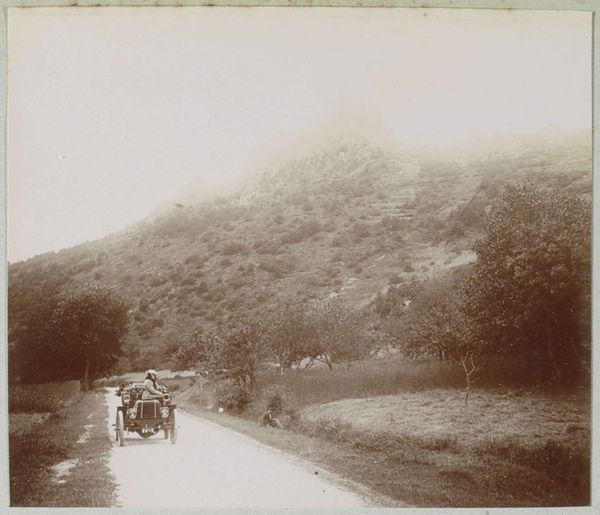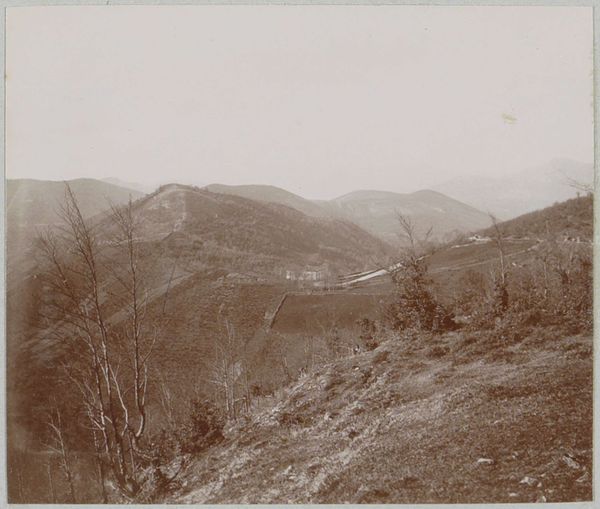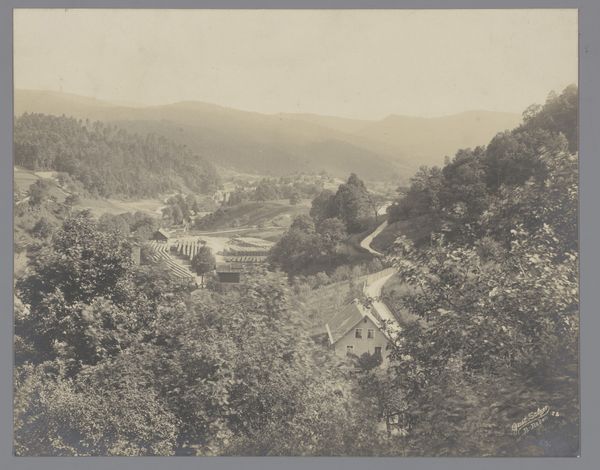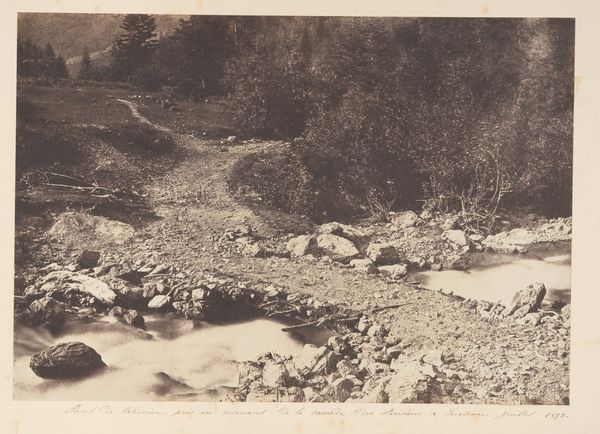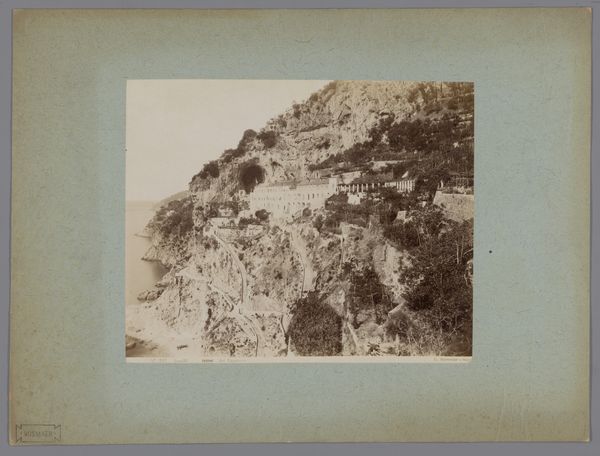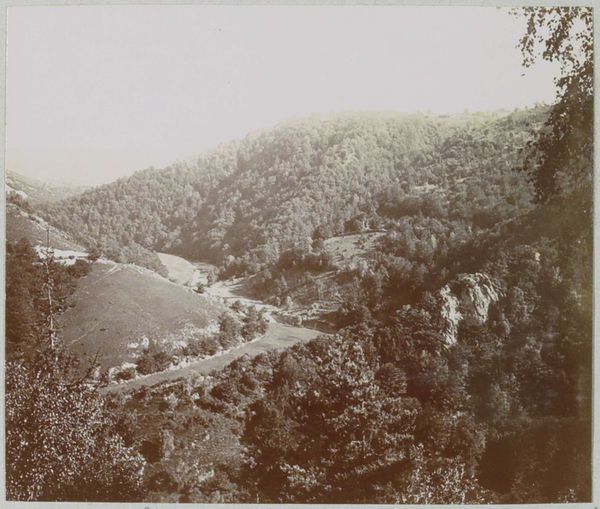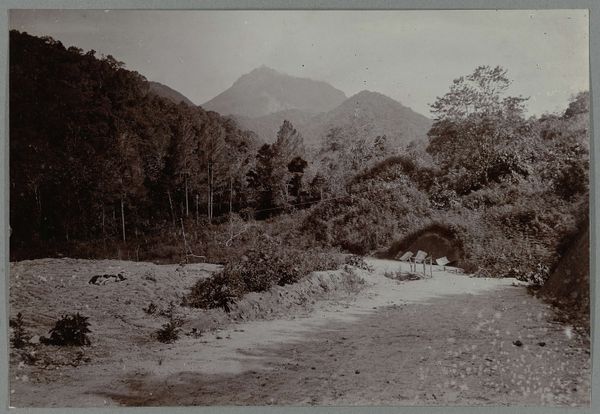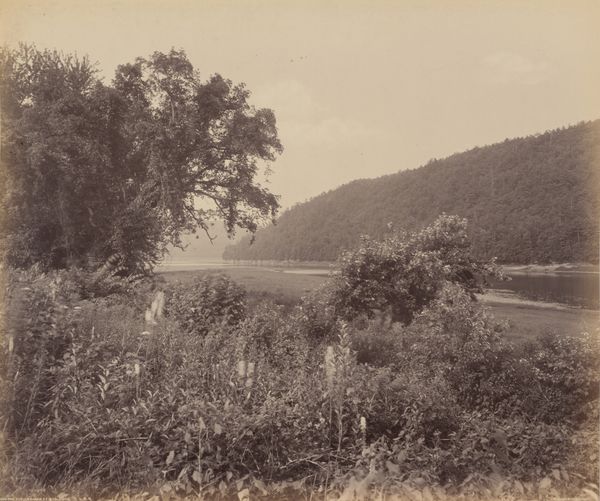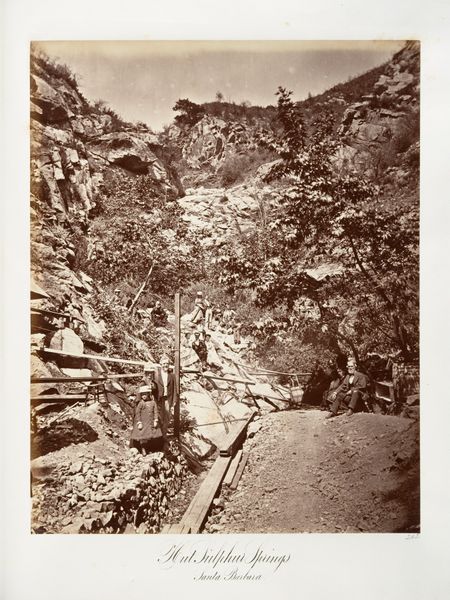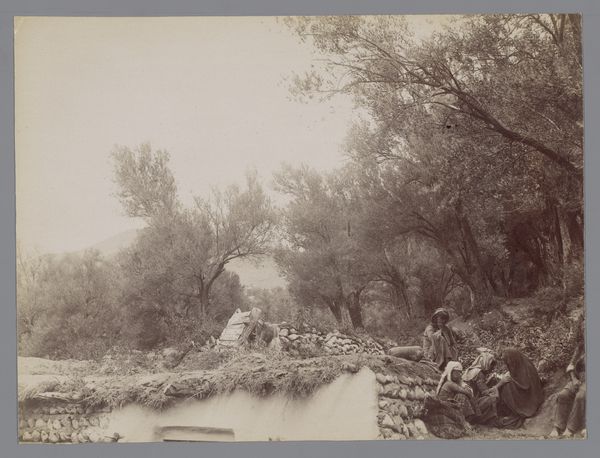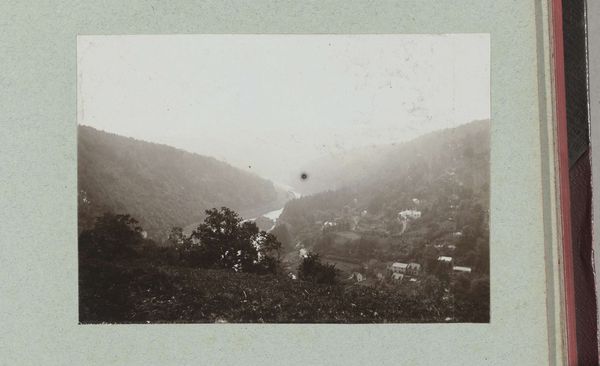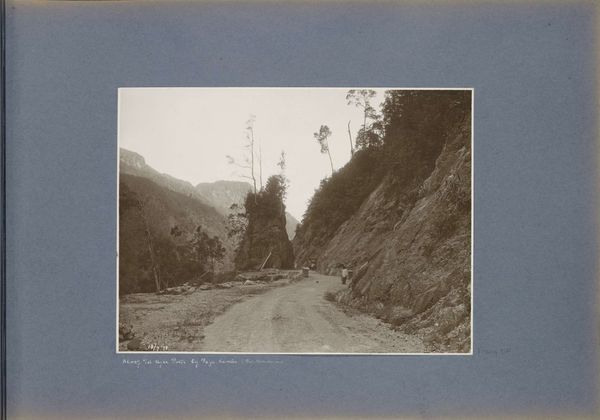![Landschap ("La route de Mazamilozan [?]"), Iran by Antoine Sevruguin](/_next/image?url=https%3A%2F%2Fd2w8kbdekdi1gv.cloudfront.net%2FeyJidWNrZXQiOiAiYXJ0ZXJhLWltYWdlcy1idWNrZXQiLCAia2V5IjogImFydHdvcmtzLzZjMjgwMTU2LWQyNGItNGNhMi1hNWNhLWJjMTE4Mjc4NTYwMi82YzI4MDE1Ni1kMjRiLTRjYTItYTVjYS1iYzExODI3ODU2MDJfZnVsbC5qcGciLCAiZWRpdHMiOiB7InJlc2l6ZSI6IHsid2lkdGgiOiAxOTIwLCAiaGVpZ2h0IjogMTkyMCwgImZpdCI6ICJpbnNpZGUifX19&w=3840&q=75)
photography, gelatin-silver-print
#
landscape
#
photography
#
orientalism
#
gelatin-silver-print
Dimensions: height 154 mm, width 206 mm
Copyright: Rijks Museum: Open Domain
Editor: Here we have a gelatin silver print titled "Landschap ('La route de Mazamilozan [?]'), Iran," by Antoine Sevruguin, dating roughly from 1885 to 1910. It feels like a document of a specific place, quiet and unburdened. How would you interpret this work within its historical context? Curator: It’s tempting to read this as simply a neutral depiction of a landscape, but photographs like these from Sevruguin are heavily steeped in the politics of representation. During this period, European powers were increasingly interested in and influencing Iran. Photography played a key role in constructing and disseminating images of the "Orient" for Western audiences. Editor: So, is this a case of Orientalism? How would you differentiate it? Curator: Absolutely. The framing, the very act of choosing this scene and capturing it, contributes to a visual narrative. Sevruguin, though himself of mixed Russian and Georgian heritage and working in Iran, operated within this larger framework. His work provided visual fodder for European imaginations and reinforced certain perceptions about the East. The seemingly objective "landscape" becomes a stage for cultural projection. The lack of human presence almost implies that it is available for taking, for building, for exploitation. It begs the question, for whom was this image produced and what narratives did it support? Editor: I see, it makes you think about who controls the narrative. How does something as simple as a landscape photo fit into a larger power dynamic? It really highlights the museum's responsibility in interpreting these works. Curator: Exactly. Museums aren't neutral spaces either. We have a crucial role in deconstructing these historical narratives and encouraging viewers to critically engage with the political implications embedded within seemingly innocuous images. Editor: This conversation shifted my understanding from admiring its apparent serenity to questioning its underlying motives. Thanks!
Comments
No comments
Be the first to comment and join the conversation on the ultimate creative platform.
